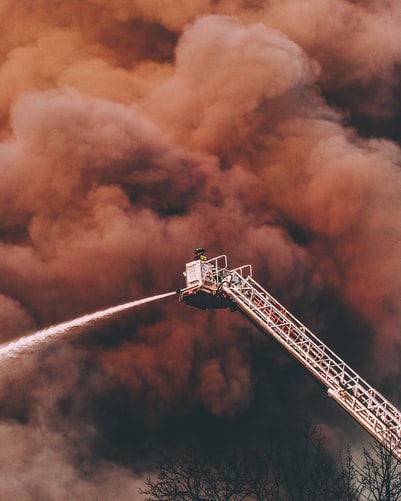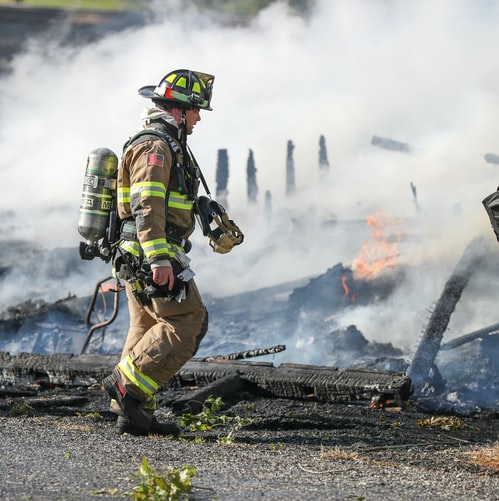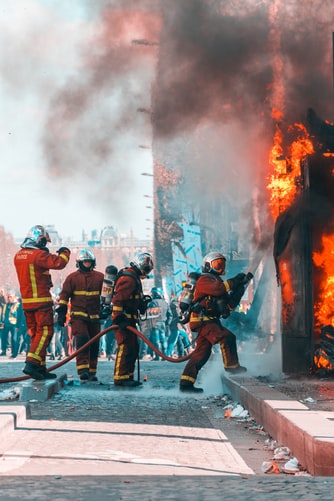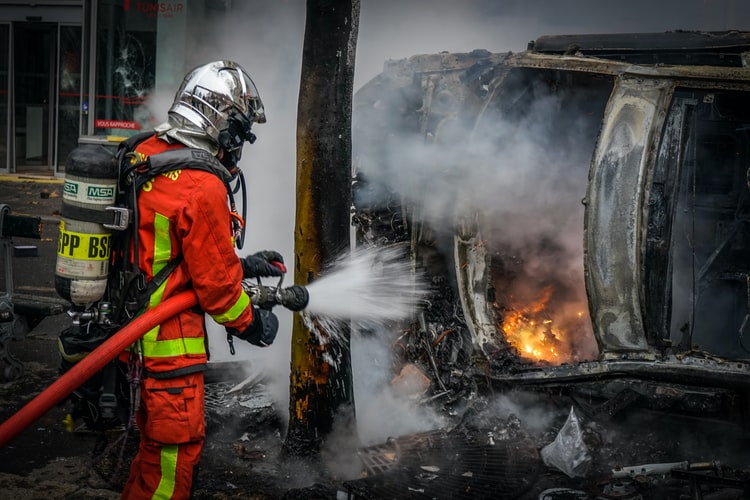A lot of people may not realize it, but the greatest danger to firefighters doesn't come from the fires themselves.
In fact, an even bigger and unspoken danger exists that most people never even pay attention to. The biggest danger that a firefighter can come up with is cancer. This is because as buildings burn, they often release toxic fumes that can be deadly. One of the biggest images of a heroic firefighter is when he leaves a burning building covered in soot. What people don’t realize is how that soot on their clothes are the contaminants from asbestos.
What Happens as a Building Burns?
As a building burns, it will release toxic chemicals, and if the building had been built between the 1930s and the 1970s, it could possibly have a dangerous mineral that was used for construction known as asbestos. Up until the early 1970s, no one knew the actual dangers that came with this substance, so they used it in construction materials quite often. It helped with preventing fires because it was a fire-resistant substance.

The problem is that when these buildings start to burn, it releases the contaminants into the air at a high rate. In fact, the dust released can be as much as 100 times thinner than that of a human hair follicle
Some of the most common materials that used asbestos-related products in them include:
-
Shingles
-
Drywall
-
Tiles
-
Adhesive tape
-
Cement Flooring
You might classify asbestos-related products into two distinguished categories. First, you have the friable products, which would include old insulation used on pipes that it was sprayed with. Next, you had non-friable products such as tiles that would usually keep the contaminants in their place, provided there was no fire that was helping to release them into the air. In fact, when a fire hits a building, it effectively makes all the building materials friable, and this is how a firefighter will face a unique set of circumstances because all the asbestos-related materials can be released into the air at the same time, which makes it particularly thick. While a construction worker or a factory worker might experience the exposure little by little over a period of months or even years, firefighters face this danger all at once because of the debris and the smoke that has been contaminated.
The Unrecognized Threat
One example that we might take of where firefighters were at a great risk of exposure to these chemicals was when you look back on 9/11. At this period in time, they had to run through burning buildings to save lives. Eventually, the Twin Towers collapsed, and this left a cloud of asbestos-containing contaminants in the air.

For days after, firefighters were digging through the rubble in a good-hearted attempt to find the last survivors of this difficult incident. In many cases, while digging through the rubble, they weren’t wearing respiratory protection that could keep them safe. The tragedy, unfortunately, will still have many more unspoken victims among the firefighting community because the symptoms of mesothelioma don’t show themselves until a couple decades later.

9/11 actually became a lesson for why firefighters needed to wear protective gear against the asbestos-related products.
How to Stay Safe
Firefighters should take proactive measures to protect themselves from this exposure that could later lead to mesothelioma. For example, you should always put on your respiratory protection because some people haven’t done this in the past. In fact, many of the firefighters have only been known to wear their self-contained breathing apparatus, and this can be a deadly decision to make because it’s not enough protection from the asbestos-related building materials. Another reason that firefighters face a unique set of dangers is that of how they will oftentimes have to pull down a ceiling or the inside of a wall. This can disturb the contaminants and put them into the air. You should keep this debris wet as a way of lowering the dust into the air.
In addition, you should never bring the toxic materials from the workplace back home because this can pose a danger to everyone in the family. Always be certain to wash your work clothes as much as possible.
Unfortunately, even non-emergency situations have become a threat to firefighters. Many times, they do training in abandoned old buildings that could still have the remnants of the contaminants, which makes it important for them to wear their safety gear.

Government officials and fire departments now have a legal responsibility to protect their team from these dangers. In fact, the Honolulu Fire Department faced a $7,000 fine as the result of not following the decontamination procedures. The legal penalties for not following the right protocol can be costly.

